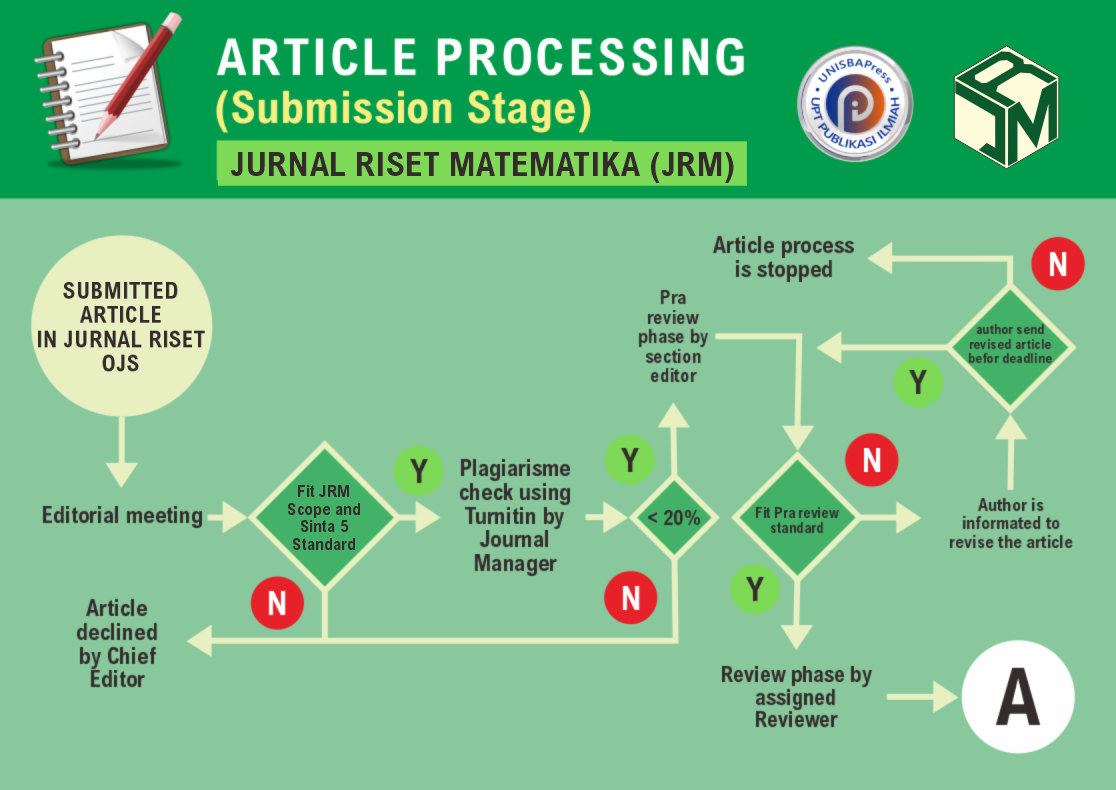Pemilihan Aplikasi Ojek Online dengan Preference Selection Index dan Simple Additive Weighting
DOI:
https://doi.org/10.29313/jrm.v3i2.2831Keywords:
Ojek online, Sistem Pendukung Keputusan, PSIAbstract
Abstrak. Multi Criteria Decision Making (MCDM) merupakan teknik pengambilan keputusan dari beberapa alternatif yang ada berdasarkan kriteria-kriteria tertentu. Tujuan penelitian ini yaitu menerapkan metode Preference Selection Index (PSI) dan metode Simple Additive Weighting (SAW) untuk menentukan aplikasi ojek online terbaik bagi kalangan mahasiswa. Data yang digunakan dalam penelitian berasal dari penyebaran kuesioner kepada 99 mahasiswa di kota Bandung. Penentuan bobot kriteria dalam penelitian ini menggunakan metode Entropy, berdasarkan hasil perhitungan metode Entropy kriteria dengan bobot tertinggi adalah dari kriteria pelayanan aplikasi, harga, dan pelayanan driver. Dari hasil perhitungan kedua metode memberikan rangking yang sama yaitu rangking teratas adalah Grab, Gojek, Maxim, dan rangking terakhir adalah Indrive. Meskipun dengan perolehan skor kinerja yang berbeda dari masing-masing alternatif. Proses pemilihan menggunakan 4 alternatif transport yaitu Gojek, Grab, Maxim, dan InDrive, serta 3 kriteria yang digunakan yaitu pelayanan driver, pelayanan aplikasi, dan harga. Diperoleh rekomendasi alternatif aplikasi ojek online metode PSI dan metode SAW dengan perolehan skor kinerja tertinggi yaitu Grab disusul oleh Gojek kemudian Maxim dan terakhir Indrive. Namun demikian penelitian yang dilakukan masih dalam skala yang terbatas.
Abstract. Multi Criteria Decision Making (MCDM) is a decision making technique from several existing alternatives based on certain criteria. The purpose of this research is to apply the Preference Selection Index (PSI) method and the Simple Additive Weighting (SAW) method to determine the best online motorcycle taxi application for students. The data used in the study came from distributing questionnaires to 99 students in the city of Bandung. Determination of the criteria weight in this study uses the Entropy method, based on the results of the calculation of the criteria Entropy method with the highest weights being the criteria for application services, prices, and driver services. From the results of the calculations, the two methods provide the same ranking, namely the top ranking is Grab, Gojek, Maxim, and the last rank is Indrive. Although with the acquisition of different performance scores from each alternative. The selection process uses 4 transportation alternatives, namely Gojek, Grab, Maxim, and InDrive, and the 3 criteria used are driver service, application service, and price. Alternative recommendations for online motorcycle taxi applications with the PSI method and the SAW method were obtained with the highest performance scores, namely Grab, followed by Gojek, then Maxim and finally Indrive. However, the research conducted is still on a limited scale.
References
N. Rizanti, L. Sianturi, and M. Sianturi, “Sistem Pendukung Keputusan Pemilihan Siswa Pertukaran Pelajar Menggunakan Metode PSI (Preference Selection Index),” Semin. Nas. Teknol. Komput. dan Sains, pp. 263–269, 2019, [Online]. Available: https://seminar-id.com/semnas-sainteks2019.html
S. Syam and M. Rabidin, “Metode Simple Additive Weighting dalam Sistem Pendukung Keputusan Pemilihan Karyawan Berprestasi (Studi Kasus : PT. Indomarco Prismatama cabang Tangerang 1),” Jurnal Keilmuan dan Aplikasi Teknik UNISTEK, vol. 6, no. 1, 2019.
A. Suryadi and E. Harahap, “Pemeringkatan Pegawai Berprestasi Menggunakan Metode AHP (Analytic Hierarchy Process) di PT. XYZ,” Jurnal Matematika, vol. 16, no. 2, 2017, [Online]. Available: http://ejournal.unisba.ac.id
J. Thakkar, “Technique for Order Preference and Similarity to Ideal Solution (TOPSIS),” Stud. Syst. Decis. Control, vol. 336, pp. 83–91, 2021.
W. I. Safitri and S. Mesran, “Penerapan Metode Preference Selection Index (PSI) Dalam Penerimaan Staff IT,” Bulletin of Informatics and Data Science, vol. 1, no. 1, 2022, [Online]. Available: https://ejurnal.pdsi.or.id/index.php/bids/index
Rahadatul Aisyi, “Implementasi Pemilihan Siswa Berprestasi Menggunakan Metode Preferences Selection Index,” Jurnal Riset Matematika, vol. 1, no. 2, pp. 145–153, Feb. 2022, doi: 10.29313/jrm.v1i2.487.
Syafnidawaty, Metode Simple Additive Weighting. Univ. Raharja, 2020.
F. Herliani and A. Kudus, “Penanganan Data Missing dengan Algoritma Multivariate Imputation By Chained Equations (MICE),” DataMath: Journal of Statistics and Mathematics, vol. 1, no. 1, pp. 35–42, 2023.
F. Indriyani, “Pemilihan ojek online bagi wanita karir menggunakan analytic hierarchy process,” JOINS: Journal of Information System, vol. 3, no. 1, pp. 22–28, 2018.
R. Tumuwe, M. Damis, and T. Mulianti, “Pengguna ojek online di kalangan mahasiswa Universitas Sam Ratulangi Manado,” Jurnal Holistik, pp. 1–19, 2018, [Online]. Available: www.GoJek.com
I. P. Pratiwi, F. Ferdinandus, and A. D. Limantara, “Sistem Pendukung Keputusan Penerima Program Keluarga Harapan (PKH) menggunakan Metode Simple Additive,” Decision Support System for Selection of the Best Teachers in SMK. Serpong Pustek by Using the TOPSIS Method, vol. 8, no. 2, pp. 182–195, 2019.
Jamila, “Sistem Pendukung Keputusan Pemilihan Subkontrak Produksi Sarung Tangan Menggunakan Metode Entropy dan Topsis,” Seminar Nasional Informatika 2012(semnasIF 2012), pp. 62–70, 2012.
A. Estetikha, Kusrini, and A. Muhammad, “Metode Preference Selection Index Dalam Menentukan Distribusi Alat Pelindung Diri di Yogyakarta,” Journal of Information Systems and Informatics, vol. 3, no. 4, pp. 740–749, 2021, [Online]. Available: http://journal-isi.org/index.php/isi
A. Setiadi, Yunita, and A. Ningsih, “Penerapan Metode Simple Additive Weighting(SAW) Untuk Pemilihan Siswa Terbaik,” Jurnal SISFOKOM, vol. 7, no. 2, pp. 104–109, 2018.
Listiorini, “15 Aplikasi Ojek Online Terbaik dan Terpopuler di Indonesia,” Carisinyal.













